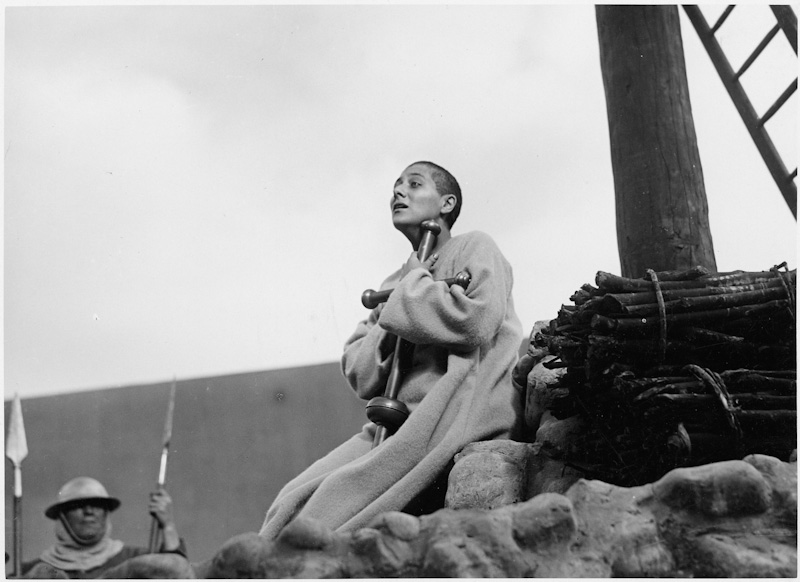| |
| |
Carl Dreyer tourne en 1928 “la passion de Jeanne d'arc”, et filme Renée Falconetti dans une interprétation si fusionnelle qu'elle ne tournera plus aucun autre film.
Jeanne d'arc, seule, résiste au pouvoir, à l'obscurantisme de l'église, avec une force qui ne semble être que naïveté et surtout avec passion, cette passion qui est le personnage central du film.
Ce film reste un chef d'œuvre et pour le spectateur une rencontre d'une rare intensité. Intimiste jusqu'à la clarté de la chair, le film de Dreyer est une merveille de lumière, de mouvements et de rythmes.Dreyer filme en gros plans, et par ce resserrement, de l'expression fait naître le mouvement, jouant du noir et du blanc, et de la lumière qui naît de l'un vers l'autre.
Catherine Jauniaux et moi avons voulu jouer avec cette lumière, son intimité et parler de ce qu'elle a provoqué en nous. Il ne s'agit pas pour nous d'illustrer ce film mais de partager un regard, avec des mots que j'ai écrits, d'autres mots, des sons, des mélodies, et ce silence qui est sans doute primordial dans l'œuvre de Carl Dreyer.
|
|
| |
Carl Dreyer films in 1928 "the passion of Jeanne of arc", and films Renee Falconetti in an interpretation so fusionnelle that it will not make any more any other film.
Jeanne of arc, only, resists the capacity, the obscurantism of
the church, with a force which seems to be only naivety and especially with passion, this passion which is the central character of film.
This film remains a head of work and for the witness a meeting of a rare intensity. Intimist until the clearness of the flesh, the film of Dreyer is a wonder of light, movements and of rythmes.Dreyer films approximately plane, and by this tightening, of the expression gives birth to the movement, playing of the black and the white, and the light which is born from worms the other. Catherine Jauniaux and me wanted to play with this light, its intimacy and to speak about what it caused in us. It is not a question for us to illustrate this film but to share a glance, with words which I wrote, other words, sounds, melodies, and this silence which is undoubtedly of primary importance in the work of Carl Dreyer. |
|

